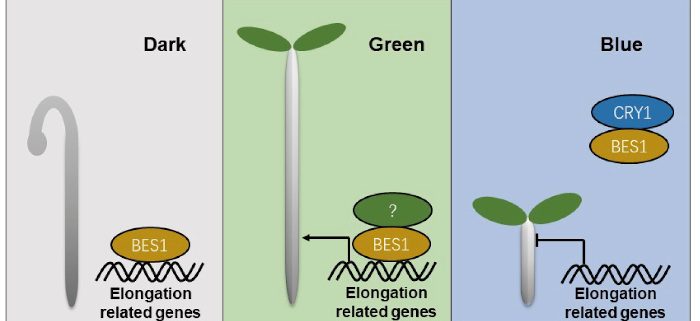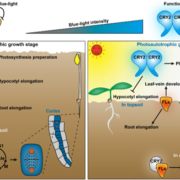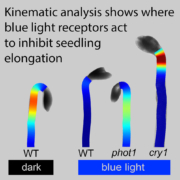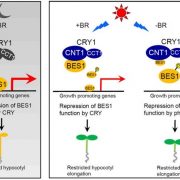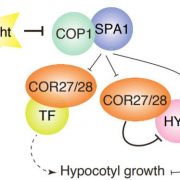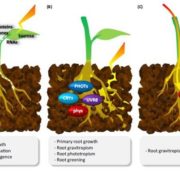Green means go: Green light and hypocotyl elongation
Hao et al. explore the role of green light in plant growth and development.
By Yuhan Hao, Hongtao Liu
National Key Laboratory of Plant Molecular Genetics, CAS Center for Excellence in Molecular Plant Sciences, Institute of Plant Physiology and Ecology, Chinese Academy of Sciences, 200031 Shanghai, P. R. China
Background: Green leaves reflect substantial amounts of green light, which gives them their pleasing green color and might give the impression that green light is of little importance to plants. However, although green leaves reflect more green light than red or blue light, green leaves still absorb around 10–50% of green light. Previous studies reported that green light participates in regulating growth and development in land plants. However, due to technical limitations, especially the wide range of green light wavelengths and limitations in LED technology, some of these studies reported conflicting results.
Question: Whether and how does green light regulate growth and development? Which photoreceptor mediates green light responses?
Findings: Other wavelengths of light (red, blue, ultraviolet) inhibit hypocotyl elongation. By contrast, we find that green light promotes hypocotyl elongation in Arabidopsis thaliana and several other plants. Green light–promoted hypocotyl elongation does not require known photoreceptors, indicating that these photoreceptors may not function as green light receptors that mediate green light–promoted hypocotyl elongation. However, the brassinosteroid signaling pathway is involved in this process. Green light promotes the DNA binding activity of BRI1-EMS-SUPPRESSOR 1, a master transcription factor of brassinosteroid signaling, thus regulating gene transcription to promote hypocotyl elongation.
Next steps: Find the green light receptor and identify the members of the green light signaling pathway.
Yuhan Hao, Zexian Zeng, Xiaolin Zhang, Dixiang Xie, Xu Li, Libang Ma, Muqing Liu and Hongtao Liu. (2023). Green means go: Green light promotes hypocotyl elongation via brassinosteroid signaling https://doi.org/10.1093/plcell/koad022


